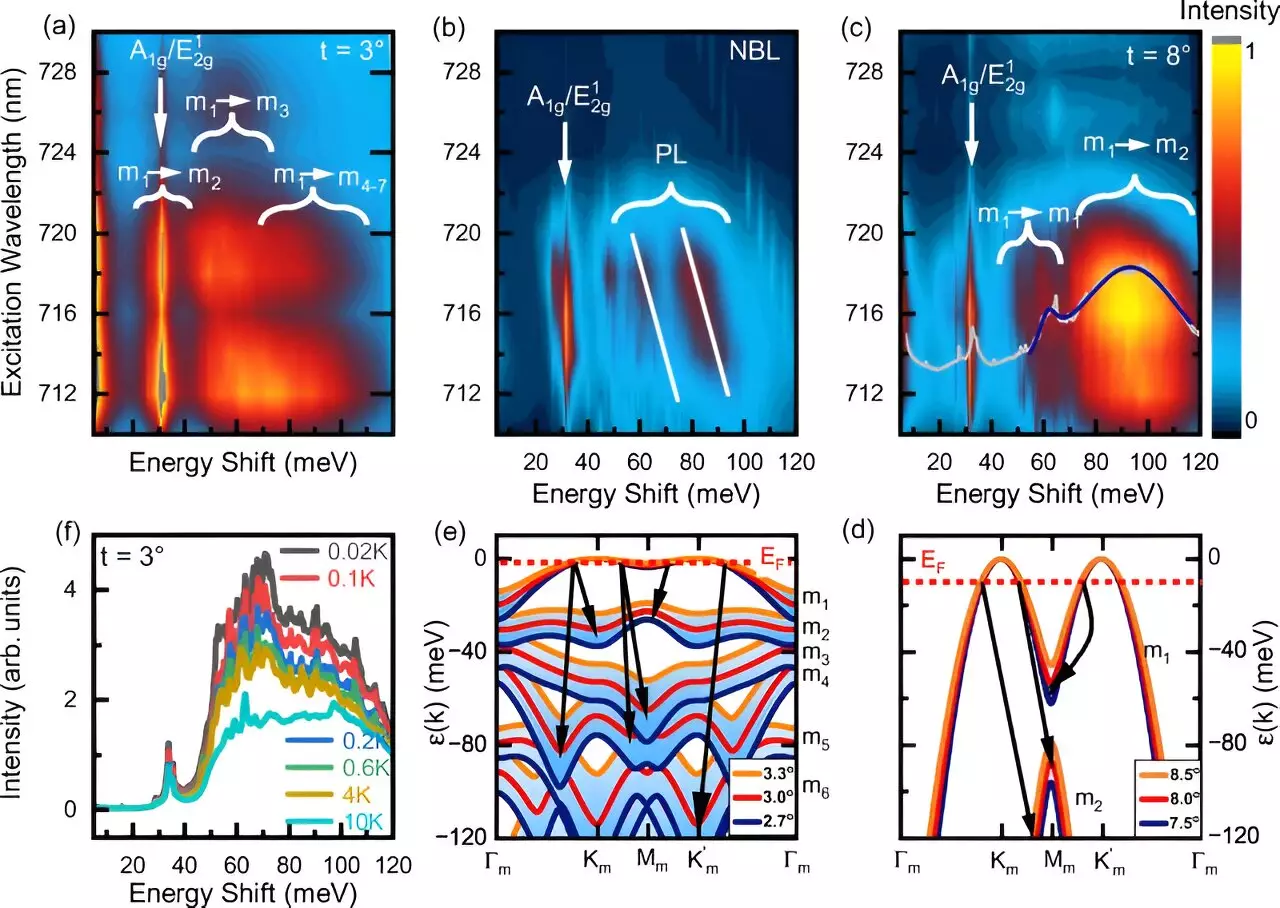The concept of two-dimensional materials continues to push the boundaries of what we know about material science. When a material is reduced to just one or two layers of molecules, it undergoes a remarkable transformation, showcasing properties that are vastly different from its bulk counterpart. This phenomenon has captivated the interest of a research team led by physicist Prof. Ursula Wurstbauer from the University of Münster.
The research team delves into the realm of two-dimensional crystals to explore how their properties can be manipulated to exhibit behaviors such as insulating, conducting electricity, superconductivity, or even ferromagnetism. Central to their investigation is the interaction between the charge carriers (electrons) and the energy landscape of the crystals.
In a groundbreaking discovery, the team has successfully generated and quantitatively demonstrated collective excitations of charge carriers within diverse energy landscapes. This study, recently published in Physical Review Letters, sheds light on the electronic characteristics of crystal structures and unveils strategies to exert control over them.
To achieve varying properties, the scientists stacked two layers of a two-dimensional crystal on top of each other, slightly twisting them. This simple twisting action gives rise to geometric patterns known as moiré patterns, akin to layers of thin curtain fabric overlapping. The moiré patterns influence the energy landscape, causing electrons to move at a slower pace, prompting intense interactions among them.
The altered movement of electrons in the presence of moiré patterns leads to what is known as strongly correlated behavior. Electrons begin to “feel and see” each other, with certain lattice sites becoming unoccupiable due to repulsion based on Coulomb’s law. Depending on the specific pattern and the number of electrons present, correlations emerge, akin to the chaotic dance floor of a disco compared to the structured movements of a formal dance.
The implications of such material systems extend beyond basic research, as Prof. Wurstbauer highlights the potential for innovative applications in quantum technology. These two-dimensional crystals could pave the way for advancements in quantum technology, neuromorphic components, and circuits, opening up new possibilities for the future.
The research team, comprising scientists from various institutions, combined experimental work with theoretical analyses to deepen their understanding of two-dimensional crystals. By preparing different materials such as graphene, molybdenum diselenide, and tungsten diselenide, and utilizing optical spectroscopy methods at cryogenic temperatures, they were able to unravel the mysteries of these materials’ properties.
The study of two-dimensional crystals and their properties continues to unveil a world of possibilities for scientific exploration and technological advancement. With each discovery, we edge closer to harnessing the full potential of these materials in shaping the future of various industries.


Leave a Reply
You must be logged in to post a comment.